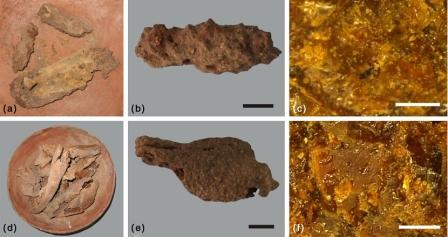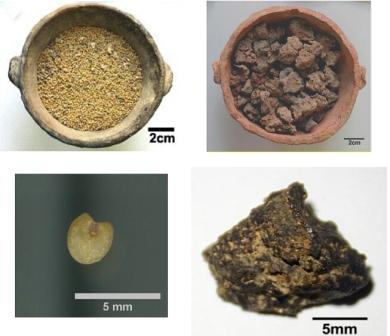

UCAS researchers discovered 2,600-year-old bread in tomb pottery, which will be the subject of a paper in the 2015 April issue of Archaeometry.
Visible food remains provide evidence of ancient food processing, the spread of cereals and cultural communication. Desiccated food remains from approximately 2600 to 2900 years ago were discovered in the Yanghai Tombs, Turpan district, in Xinjiang. The food remains were analyzed by Fourier transform infrared (FT–IR) spectroscopy along with plant microfossils, including starch grains and pericarp cross cells from the cereal bran fragments.
According to the results, Dr. Yang Yimin said that the food remains were cooked dough food made from wheat (Triticum aestivum) and barley (Hordeum spp.). The cross-sections of the remains appear very dense, rather than porous, under a microscope, which suggests that no fermentation occurred, therefore the foodstuffs may be a type of flatbread.
Although wheat and barley were introduced into China by at least the third millennium BC, these remains are the earliest known direct evidence that wheat and barley were ground into flour and then processed as foodstuffs in north-western China.
The evidence of the spread of Triticeae crops and of food preparation techniques, suggest that ancient Turpan was a significant area of intersection between East and West.
Written by Yang Yimin

